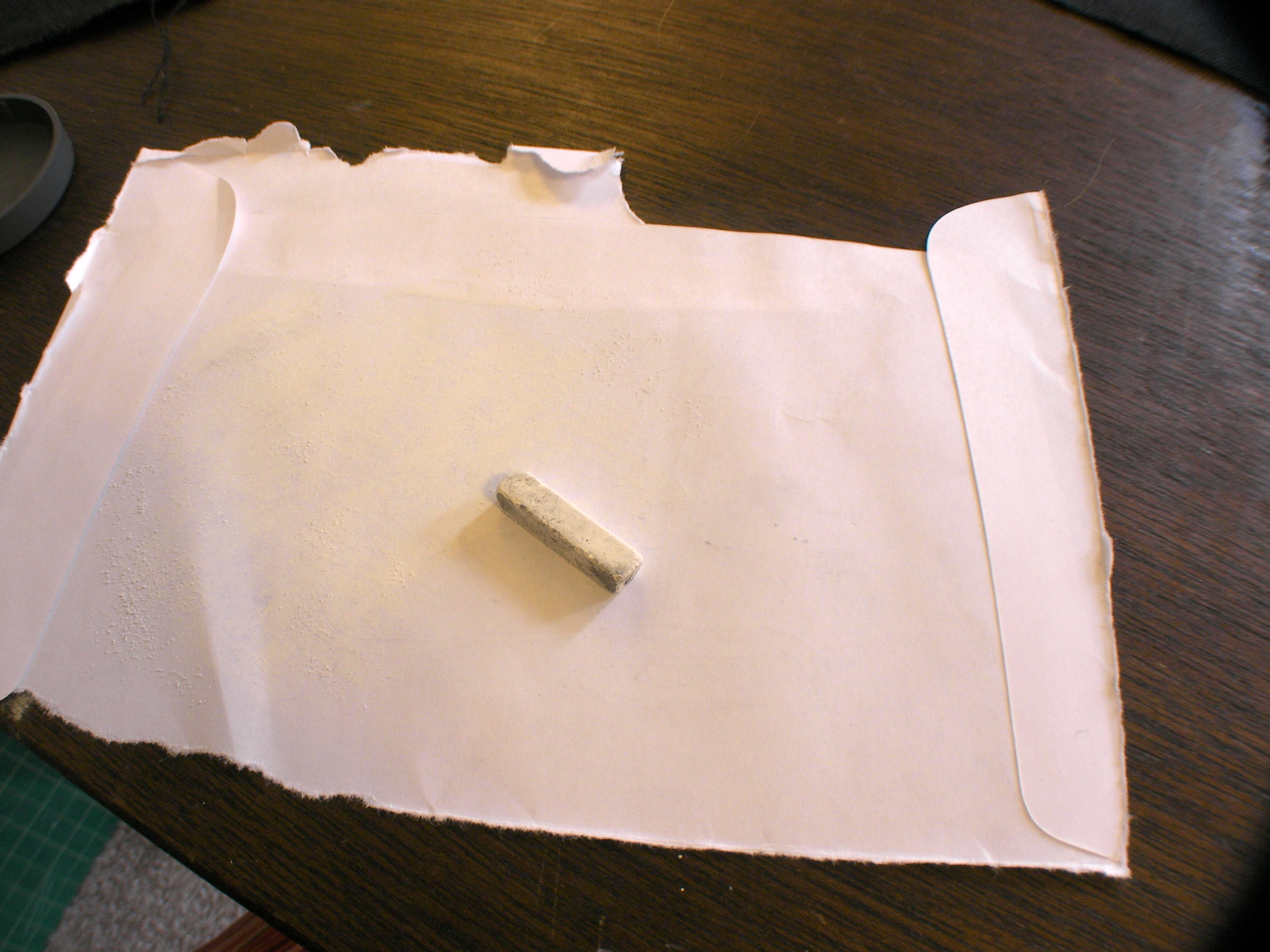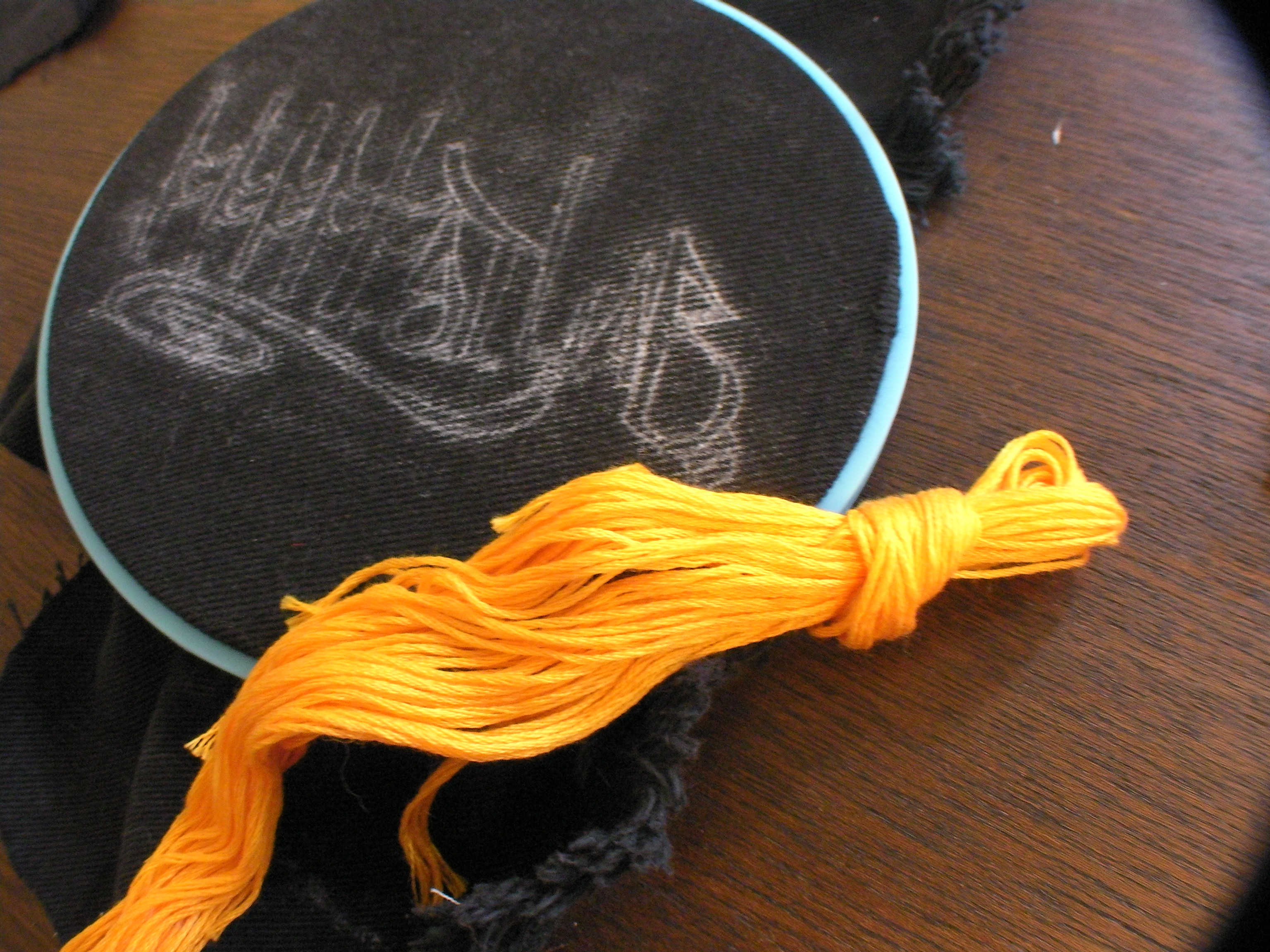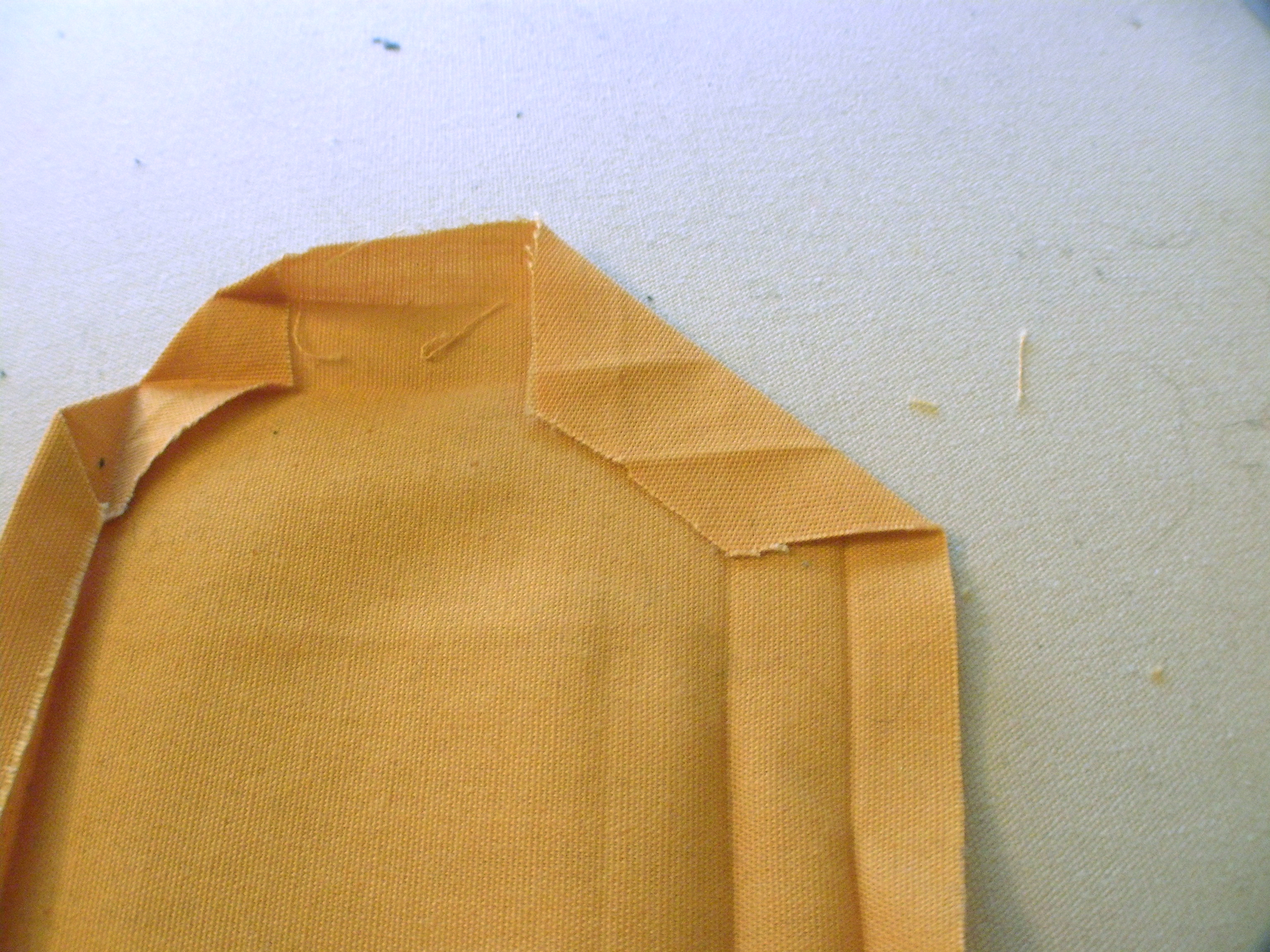Reproducing digital artwork in embroidery isn’t hard if you follow these simple steps. I’ll show you how using the fffffatlab text.

Trace your artwork.
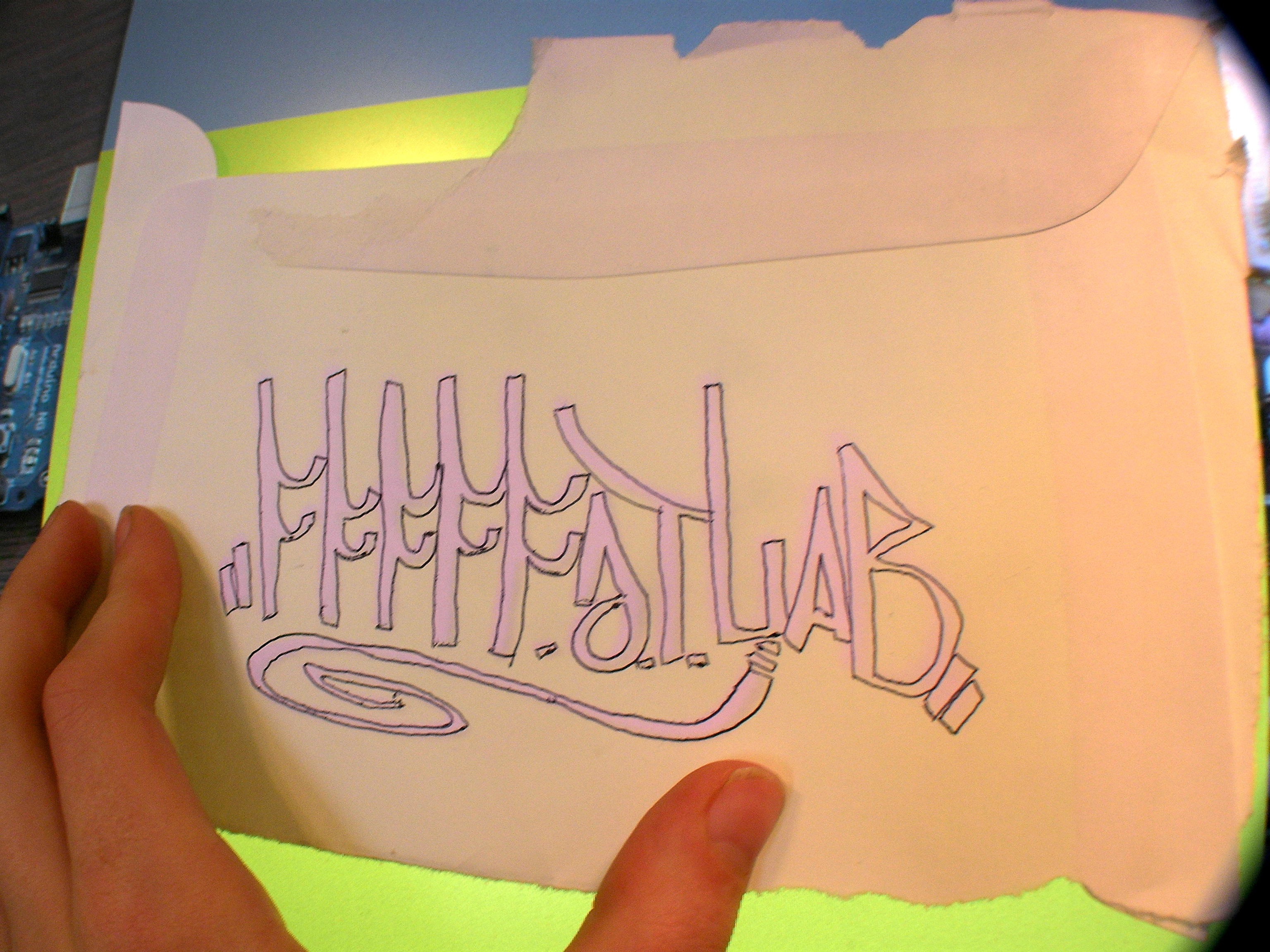
If you’re using a light-colored fabric, you may be able to trace directly on the fabric. In this case, I’m using a very opaque canvas fabric, so I had to first trace the design on paper, directly from my computer screen.
Don’t use a drawing implement that requires too much pressure or that will bleed through onto your monitor. A regular ballpoint pen works just fine.
Chalk it up.
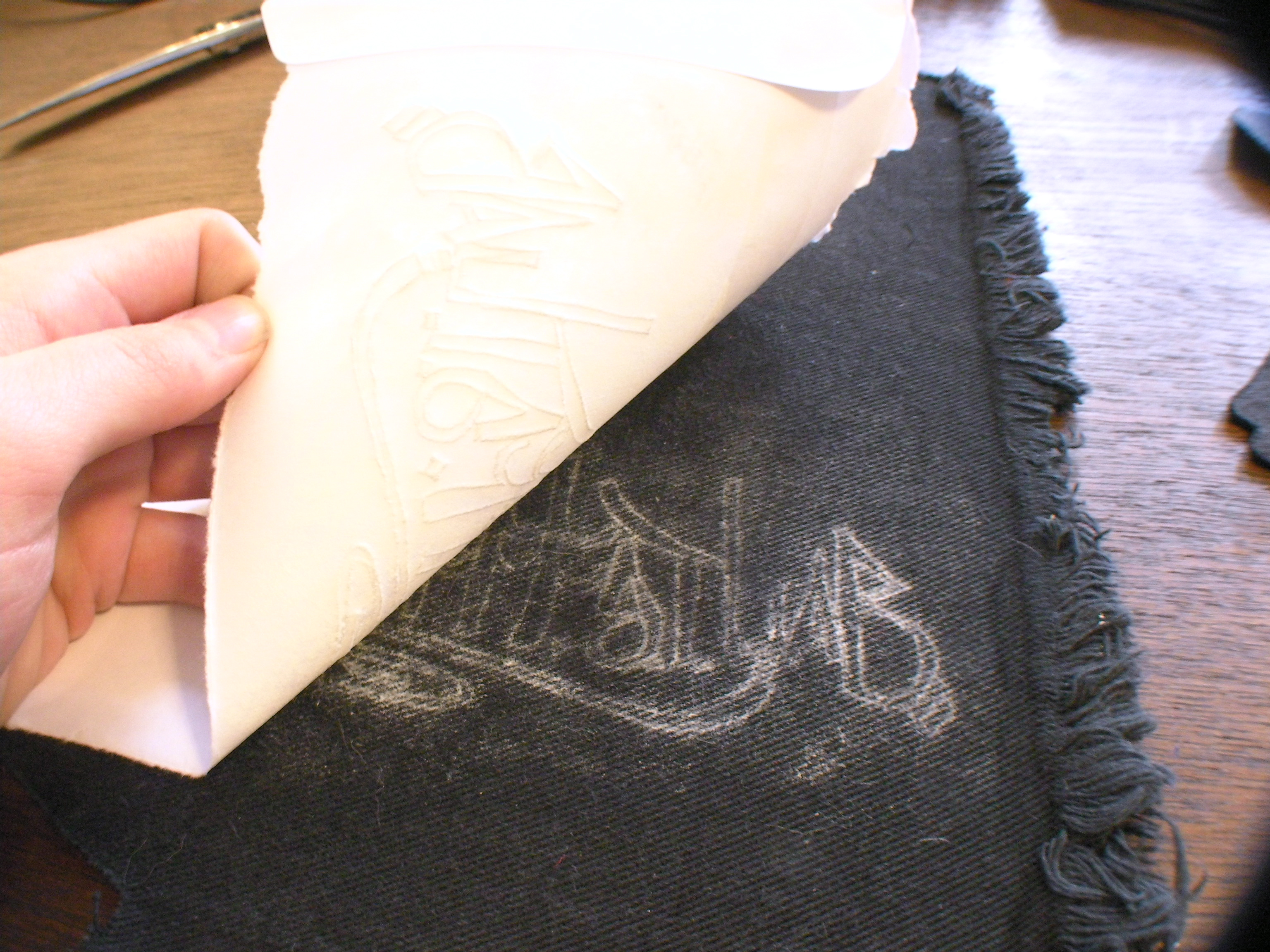
If you traced your design directly onto your fabric, skip this step.
Turn your paper template over and apply chalk or conti crayon to the back (in a color that will be visible on your fabric).
Shake off the dust and place the paper template on your fabric.
Trace over the design with a dull pencil or ballpoint pen, transferring the lines of the design onto your fabric.
Be careful not to touch it too much after this, as the chalk will rub off with your touch.
Start embroidering.
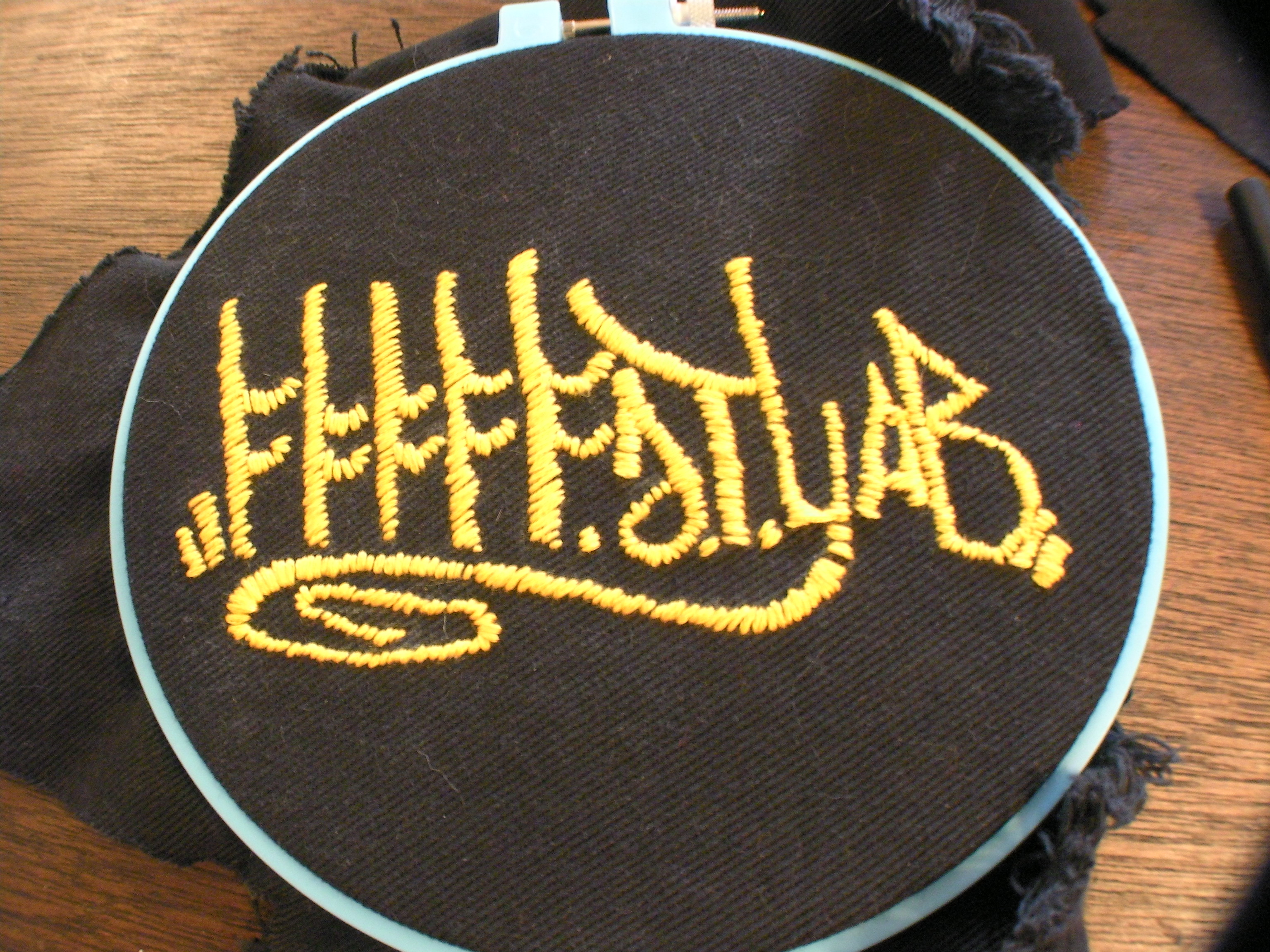
Stretch your fabric in your embroidery hoop.
Select your floss color and get started.
Use whatever stitches you feel are appropriate, and don’t be afraid to experiment. I used the satin stitch for these.
It may be helpful to keep your reference image up on your monitor so you can keep track of small details that might have been lost in the tracing transfer.
When finished, take your fabric out of the hoop and shake off any remaining chalk.
Iron out the creases from the hoop.
Create a backing (optional).
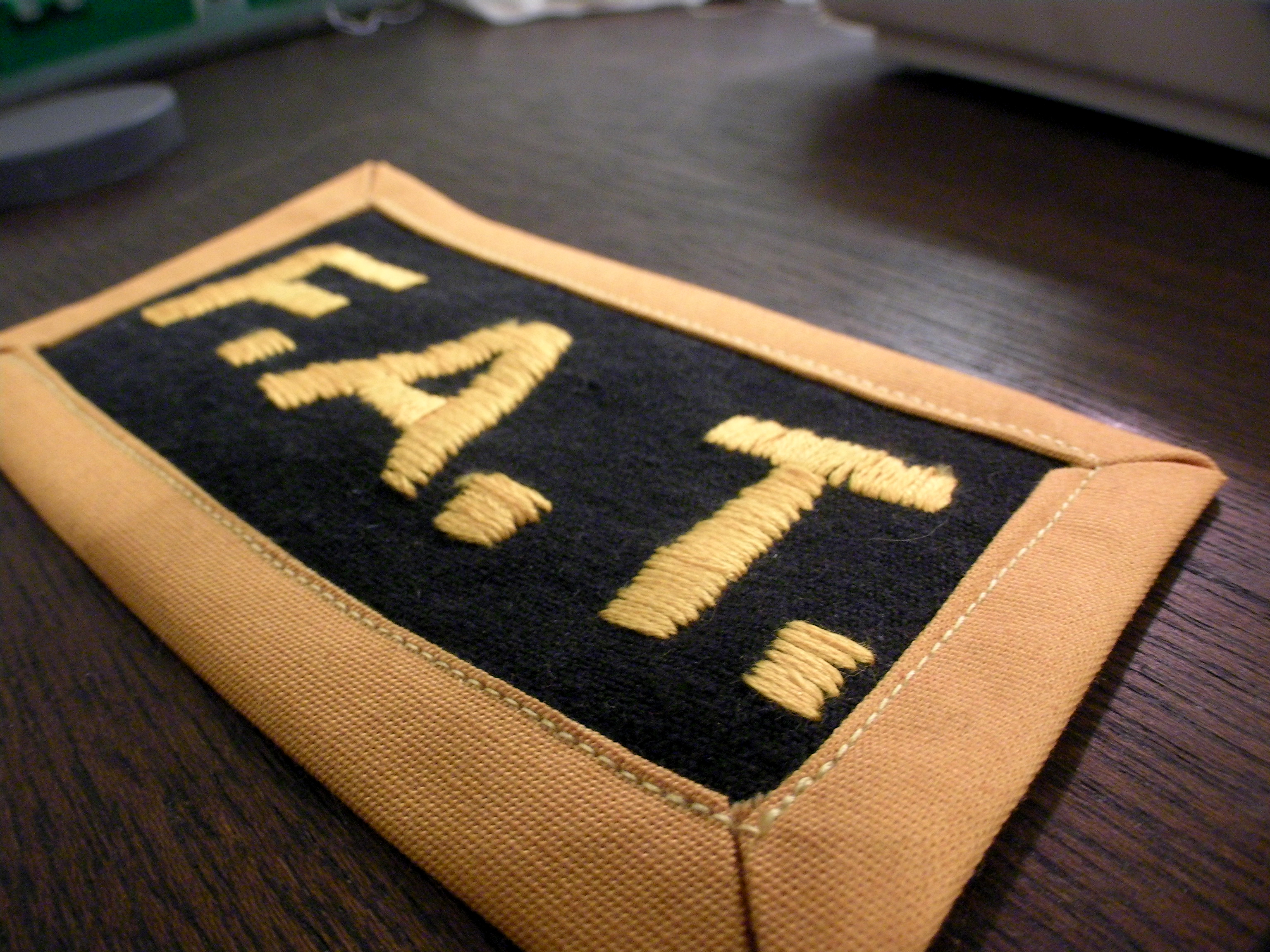
This step is optional, but gives a nice finished look to your patch.
Cut a rectangle of your backing fabric with about a 3/8″ border seam allowance all around your patch.
Press in a 1/4″ fold on all sides. Trim the corners at a 45° angle passing through the intersection of the two ironed creases.
Iron in another 1/4″ fold, turning under the first fold you made.
Press in the corners so that the edge of the crease intersects the new corner intersecting folds, then press in the sides again.
You should end up with nice mitered corners.
Place the patch inside this frame and topstitch around all edges for a nice complete patch.




